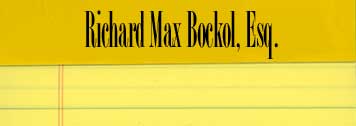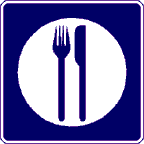Cuvée Notredame | ||
| 1701 Green Street "Cézanne" is the name that was reverberating throughout Philadelphia during the summer of 1996. Most city-dwellers never venture toward the multitudinous tiered steps of our Art Museum but for an event of the calibre portended by that Cézanne Exhibit. Cuvée Notredame's opening anticipated the upcoming Exhibit by a month or two. As a sophomore at Haverford College I'd enrolled in a "gut" course titled "Art Provencal: Nudity Where Aix Marks the Spot." Needless to say, my swift review of the works of Renoir, Van Gogh, Matisse, Bonnard and Dufy enforced my highfalutin false fantasy that a smear of lavender here and a shmear of sunslashed gold there could produce my personal canvas of equal merit. Next to last class, a nude female appeared, ready to be painted as still as life. If you've been practicing law as long as I have, you may recall that the nearby sight of a nude woman, circa 1962, was at best a rare event. So I have to admit, the novelty threw an imbalance into the nerves of my brush hand. I mixed my paints by trembling. I attempted to capture the exact colors her skin seemed to thrust from areas imbued with light, or shaded therefrom by ominous curves and denting dimples. I dabbed at and charted my palette through tones of rusty reds and muted greens, using broad wild strokes emphasizing thickness of structure and firmness of femininity. I converted her into a sepia-toned sight over backgrounds joined by emerald scrubgrass and shining sunflowers. I was touching Provence in this remarkable reverie. They say it took a full five minutes to pull me away from the model. I had just started embellishing her tush with a five-inch wide housepainter's brush laden with oils resembling olive tapenade. She hadn't seemed to mind, except for the tickling to which the remainder of her body had succumbed while her belly had taken on the appearance of a fabulously colorful, well concocted Fruits De Mer. My actual canvas, of course, was as blank as my mind had gone. "Cézanne, Cézanne," my professor was yelling, or at least I thought so, as I hungrily began nibbling at my masterpiece. "Cézanne," I heard. Everyone else recollects that he was screaming "Seize him!" It all ended well when my brains unscrambled. The model, a kind Bryn Mawr graduate, and the professor on loan from Swarthmore, accepted my instant apologies. However, both confessed that I might consider an Earl Scheib Franchise rather than going on to law school. I realized then and there that Provencal painting can arouse quite an appetite. Belgian co-proprietor, Michel (as in "seashell") Notredame and his Irish counterpart, Kevin (as in "heaven") Meeker, remade a former Italian dining establishment a few blocks from the Art Museum into a Belgian bistro, Cuvée Notredame. You'll first notice a bar whose on-tap Belgian "bierdam" brews complement a list of Abbey Ales, Trappist Chimays and Lambic fruit-flavored barleys. Neighbors attired in anything from suits to sweatshirts are chatting and laughing. Excuse yourself past them into a main dining area whose length approaches that of two bowling alleys. All wood is painted burgundy. The walls are faux-marbleized wheat colors. Large upside down copper lampshades with lanyard laces up their spines create a luminescence made prettiest as the sun goes down. A country haze envelopes the room whose floor-to-ceiling windows provide white linen sunglasses preventing glare. Chairs are comfortable, but no more than of a black vinyl tubular variety one might find in a 1950's kitchen. Above a grey fireplace at the pinsetter's position is an antique gilded framed photo of the nineteenth century Notredame family. Michel's grandmother is the little girl with the ribbon in her hair. Her present reputation as an octogenarian with propensities for extremely high-heeled shoes, long cigarettes and champagne are as legendary as her smirk in the family portrait. Order Soup De Poissons ($7.95) and Moules à la Provencale ($18.95) to celebrate artistic endeavors. The former, the fish soup, is a steamy broth on whose surface float tiny globules of fish oils, and under whose surface congregate chunks of cod, shrimp, scallops, bass and assorted vegetables. It's as if you've been transported by barge up the Rhône to Arles or Avignon, and left to repast at a dockside fish house. Notredame's fish is sweet, fresh and blossoms to turgidity in the herbal swirl of soup. The French would not disdain from picking up the bowl with two hands and bringing it to lips, in order to allow for complete consumption. You should not hesitate either. The mussels dish is interposed with tomato, garlic, onion and white wine. More than forty of the black-shelled beauties are crammed with all ingredients into what can best be described as a steamer the size of a small fire hydrant. The lid is removed tableside to a swoosh of heat that fogs the eyeglasses of anyone within twenty feet. The smell of garlic pounces at you mollified by the odor of tomatoes and vin blanc. French fries, skinny and salted, and hot rolls are served alongside to complete the ensemble. Close your eyes, and you're on Cours Mirabeaux in Aix-En-Provence. This eatery is the darling of the Fairmount-Art Museum area. One ought never miss its five dollar lunch specials of Tough Steak, Salad and Couscous, or Roast Beef, Carrots and Rice. And "never" is too soft an adverb with regard to Sunday Brunch. One last word...duck. Michel slowly bastes Canard for four hours in framboise; or serves it medium rare, stuffed with ground veal, pistachios and raspberry sauce. Order it when you make your reservation. That's how brilliantly it's done. NON OMNIA POSSUMUS OMINES MANU PROPRIA. | ||
| Copyright 2004 Richard Max Bockol, Esq. | Back | |


